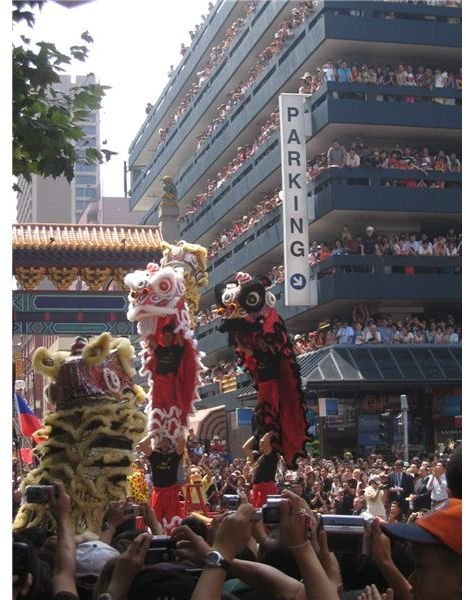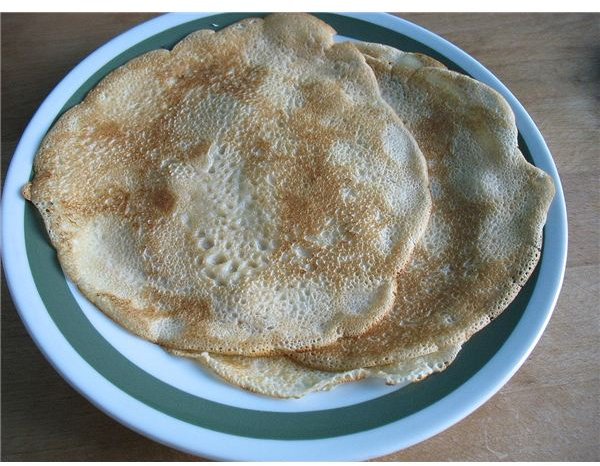The Spring Equinox: How It Has Been Celebrated Throughout the Years
You may have heard someone (most likely the weather man) refer to the spring, or _vernal e_quinox – when in the northern half of the world, winter gives way to spring. But why does it sometimes change dates and how has it been celebrated throughout the years?
The World Spins
We are spinners. We don’t feel it but the Earth revolves around the Sun. It takes a year for the Earth to make a complete trip. The Earth turns on its axis – an imaginary rod that looks as if it could bisect the world in half. This axis line is tilted about 23.5 degrees. When the northern hemisphere tilts toward the Sun the days are longer. When the southern hemisphere is tilted toward the Sun, the people who live in that region get their warmer weather.
Now twice a year, at the beginning of spring and fall, the equinox rolls by. The spring equinox is called vernal and the fall equinox is called autumnal. This means on the first day of spring and the first day of fall, the Sun shines right over the equator. Equinox means “equal night.” Daylight and nighttime feel about the same length of time. It’s all about the incline.
What Happens with Days?
On the days moving toward spring, daylight seems to be gradually hanging around longer and the nights appear to be shorter. Is that true? Yes, and when March 20, 2014 rolls around, day and night are going to be nearly equal. It’s also a signal that winter’s over and spring starts; a seasonal change.
At 16:57 UTC (12:57 PM EDT), the sun will shine directly on another invisible line, called the equator, that divides the world in half. In other words, the sun crosses the equator going northward and the sun will then rise in the east and set due west on this day almost equally. On the lower half of the world—called the southern hemisphere—it will be the fall equinox.
Solstice - What Does It Mean?
A solstice is either of the times when the Sun is farthest from the equator – around June 21 or December 21, give or take a day.
After spring equinox, the northern hemisphere tilts toward the sun and it becomes summertime. When we have summer, Australians, the folks we call “the down-unders”, are having winter.
On the summer solstice, we observe the longest day with the most sunshine and in the winter solstice, it is the shortest day with the least amount of daylight. As noted in LiveScience, “Earth is actually farther away from the sun during the summer than it is during the winter months, because our planet’s orbit is elliptical, a squished circle of sorts.”
Traditions and Celebrations

With different cultures, the spring equinox marks the beginning of a new year, just as we use January 1 for the start of our calendar. It has a lot to do with planting crops and seeing the land become new again with growth.
In China the spring means green dragon and families will sometimes mark the day by observing dancers dressed with lion masks who dance to scare the evil spirits away. Chinese children will get small red bags with money.
The second new moon after the winter solstice marks Chinese New Year, which changes every year. On that occasion, a paper dragon will snake its way down the street, and people will parade with paper lanterns.
Historical Transitions
For over 2,000 years, the people of India have celebrated the spring equinox with Holi. Persians have welcomed the arrival of spring with the celebration known as No Ruz (or, Nowruz) for thousands of years as well. Both of these events are festive occasions that associate the arrival of spring with renewal, hope, and joy.
The Mayans of Central America also observed the changing of the seasons and had something visually unique to map the cycles of the sun. At Chichen Itza there is a pyramid – El Castillo – and it was constructed by astronomers and architects of long ago. Twice a year, on the dates of the spring and autumn equinoxes, the afternoon sun hits the structure in such a way that it appears to have a 100-foot long snake slithering down the pyramid. At sunset, the shadowy body intersects with a huge stone carving of a snake head_,_ located at the bottom of the main staircase.
Food Celebrations

Pancake Week, called Maslenitsa, is a Russian tradition that dates back over 1,000 years – there is evidence to support that it may have been celebrated as early as the 2nd century A.D. It, too, is a ritual for the spring equinox. The golden pancakes, called blini, served up are made to celebrate the sun and are patted with butter; hence, the more butter, the hotter the sun. Welcome spring!
Five hundred years ago, Cree Native American Indians used to eat only berries on the spring equinox, because they knew the bears came out to feast on them—out from their long winter’s sleep. A bowl of berries was held high overhead, in thanks to the Great Spirit for renewal of spirit and life.
Superstitions
There is a funny superstitious belief that on the first day of spring, you can stand raw eggs on their end. It is based on an old Chinese tale that claims good luck would follow on the success of it. Are you going to try it? Mark your calendar for March 20, 2014 at 12:57 p.m. EDT (Eastern daylight time) and give it a whirl!
No matter if you make paper lanterns, eat golden pancakes, or travel to Mexico to see the spring snake, celebrating spring is a form of renewal for everyone, not just plants and trees. It’s also a great time to fly a kite!
References
- Deborah Byrd,“A Chinese perspective on the spring equinox,” EarthSky, March 19, 2013, http://earthsky.org/human-world/a-chinese-perspective-on-the-spring-equinox
- Chinese New Year Celebration in Melbourne by Marcus Wong under CC BY-SA 3.0
- Illumination of Earth by the Sun at the March equinox by Dennis Nilsson under CC BY 3.0
- Pfeffer, Wendy. A New Beginning: Celebrating the Spring Equinox. New York: Dutton Children’s Book, 2008.
- Homemade thin blini by Hugo,arg
This post is part of the series: Curious Customs: Stories Behind Popular Holidays
We take holidays for granted in that we celebrate them according to tradition, but where did the tradition come from? Why do we buy a Christmas tree? Why are hearts popular on Valentines? What is the reason we decorate pumpkins for Halloween? Find out in this series.
- The History of Valentine’s Day
- The Origin of Presidents’ Day: Who Are We Celebrating?
- Who Was St. Patrick?
- Origin of April Fool’s Day
- The Science, History and Culture Behind the Spring Equinox
- Curious Customs: Stories Behind Popular Holidays—Passover Seder
- Curious Customs & Stories Behind Mother’s Day
- History & Origins of Labor Day
- The Origins of Common Good Luck Traditions
- Three Superstitions and Their Origins
- The History of the Olympic Games
- What is All Hallows Eve? The Customs and Origins of Halloween
- The Origins of Thanksgiving: The Whole Truth and Nothing But the Truth
